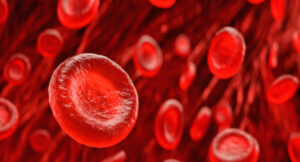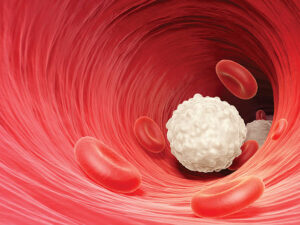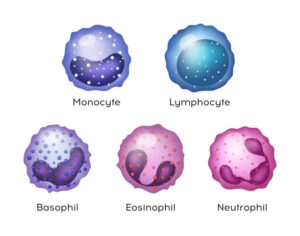Blood is an incredibly important component of the human body and plays a vital role in keeping us healthy and alive. As such, it is important to understand what makes up blood, how it functions, and what happens when things go wrong. This article will provide an overview of the different components and their roles in the Compositions Of Blood, as well as discuss some common disorders that can result from an imbalance of these elements.
Table of Contents
The Blood Components
Red Blood Cells (RBCs)Oxygen Carriers

The most abundant blood cell in the body, accounting for about 45% of the total volume. These cells are oval-shaped, have no nucleus, and contain hemoglobin.
Blood is essential for human life, and understanding its components is crucial to maintaining health. Red blood cells (RBCs), also known as erythrocytes, are the most abundant cell in the bloodstream, accounting for approximately 45 percent of their total volume.
RBCs are disc-shaped cells with a central pallor that lack a nucleus and carry hemoglobin – an iron-containing protein responsible for carrying oxygen from the lungs to body tissues and carbon dioxide from body tissues back to the lungs.
These unique characteristics enable RBCs to effectively transport oxygen throughout the body, providing energy for organs and muscles to function properly. Additionally, RBCs play an important role in defending against infection by helping white blood cells recognize foreign invaders such as bacteria or viruses.
Compositions Of Blood furthermore..
White Blood Cells: Immune Defenders

White blood cells, also known as leukocytes, are the body’s immune defenders. They function as part of the circulatory system to fight infection and help the body heal itself. The four main types of white blood cells are granulocytes, monocytes, lymphocytes, and eosinophils.

Each type has a specific role in fighting disease or defending against bacteria or viruses. Granulocytes are responsible for destroying bacteria and other foreign invaders which enter the bloodstream. Monocytes act as scavengers and engulf bacteria and debris that cannot be destroyed by granulocytes.
Lymphocytes detect abnormal proteins on cell surfaces caused by viruses or foreign bodies, then produce antibodies that destroy them. Lastly, eosinophils recognize parasites such as worms in the bloodstream before releasing enzymes to digest them.
Platelets: Wound Healers
Platelets are a critical component of blood and play an important role in wound healing. Platelets, also known as thrombocytes, are small cell fragments that don’t contain a nucleus and lack the ability to divide. When they recognize an injury or cut on the body, platelets activate and immediately join together to form a clot.
The clot acts as a protective barrier against infection while providing the perfect environment for new tissue growth and repair. Platelets contain essential proteins called growth factors, which support the production of collagen to help rebuild damaged tissue at the site of injury.
Additionally, platelets release chemical signals that attract white blood cells from the immune system to fight off any potential infections. As part of their healing mission, platelets also bind with red blood cells to help deliver oxygen-rich nutrients necessary for recovery.
Plasma: Nutrient Transporter
Plasma is an integral component of the human body’s circulatory system, and it acts as a vital transporter of nutrients, proteins, and other essential elements. It is composed mostly of water, with small amounts of proteins, electrolytes, and other minerals.
One of the Compositions Of Blood is this, Plasma carries hormones from one part of the body to another, nourishing cells throughout the system. This nutrient-rich fluid also serves as a medium for transporting metabolic waste away from organs and tissues to be eliminated by the kidneys.
Additionally, plasma can help regulate blood pressure levels in our bodies by acting as a cushion between individual blood cells—preventing them from sticking together or clumping up while they circulate around our bodies. Its ability to quickly adjust to changes in temperature makes it ideal for regulating body temperature and protecting us against dangerous viruses or bacteria that may enter our bloodstream.
Disorders Related to Blood Components
Disorders related to blood components are common and sometimes life-threatening medical issues that can have serious impacts on our health. Blood is made up of several key elements, including red blood cells, white blood cells, plasma, and platelets. When something goes wrong with one or more of these components it can cause a variety of disorders in the body.
The most common disorder related to blood components is anemia, which occurs when there is a decrease in red blood cells or hemoglobin levels. This decreases the amount of oxygen-carrying capacity in the bloodstream and can result in fatigue, lightheadedness, headaches, and other symptoms.
Other conditions that may arise include leukopenia (low white cell count), thrombocytopenia (low platelet count), and hemophilia (deficient clotting factors).
A Comprehensive Guide About Bacterial Infection In Blood.
Conclusion: Vital Role of Blood Components
The compositions of blood are complex and intricate, but it plays a vital role in the functioning of the human body. Blood consists of several components, which are necessary to sustain life.
Red cells provide oxygen to tissues throughout the body, while white cells protect from invader organisms and platelets help with clotting. Plasma is also an important component that helps transport nutrients, hormones, and proteins.
In conclusion, each component of blood has a vital role to play in keeping us healthy. Red cells move oxygen around our bodies, white cells fight off infection and platelets help with clotting when we get injured or bleed too much from wounds. Plasma delivers essential elements to keep our bodies functioning properly.
Without these components working together effectively, we would not be able to survive for very long at all!